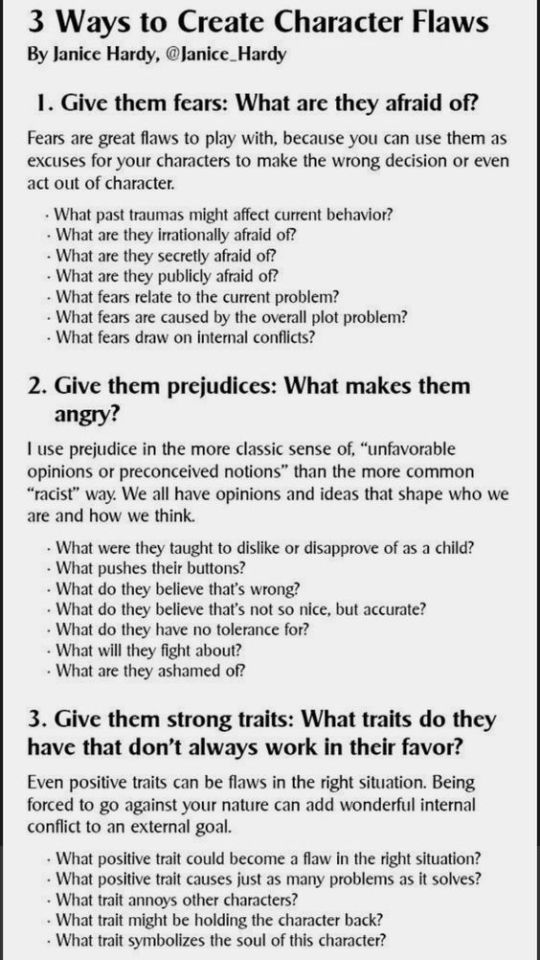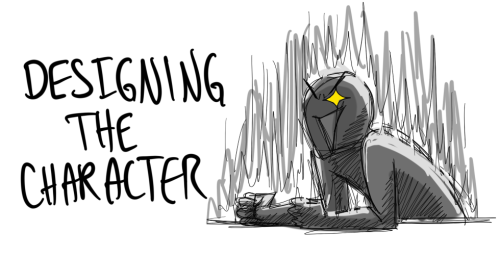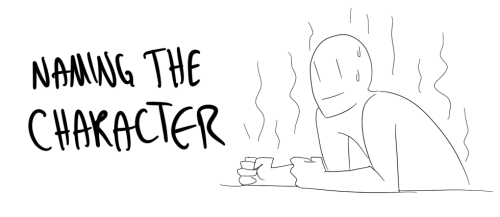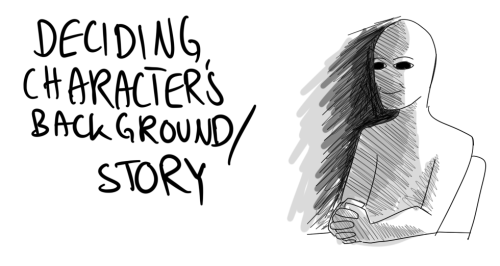Emotions In Writing
Emotions in writing
The following examples have been taken from the book The Emotion Thesaurus: A Writer's Guide To Character Expression by Angela Ackerman & Becca Puglisi - make sure to get the book!
Confidence
Definition: having faith in one’s own influence and ability
Physical signals: Strong posture (shoulders back, chest out, chin high) Walking with wide steps Strong hygiene and personal grooming Holding the hands loosely behind the back Touching one’s fingertips together (tapping, forming a steeple) A gleam in one’s eye, an inner light Smiling, a playful grin Winking or giving someone an easy nod Keeping one’s hands out of the pockets Appearing relaxed (drumming fingers against a leg, humming) Taking up space (legs spread wide, arms loose at the sides) Approaching people with ease Looking others directly in the eye Arms swinging while walking Choosing the middle, not the sides (be it a couch or a room) Using exaggerated movements to draw attention to oneself A booming laugh Showing comfort in the close proximity of others Initiating contact Telling jokes, adding to or steering a conversation Hosting events (getting the guys together for a football game) Openness when dealing with people Appearing unbothered by what others may think Leaning in to talk or listen Increased physical contact, becoming touchy-feely Running hands through one’s hair or flipping the hair back Assuming a pose that draws attention to one’s best attributes Wearing clothes that are flashy or dramatic
Internal sensations: Relaxed muscles Easy breaths Lightness in the chest
Cues of acute or long-term confidence: Doing or saying things outside of the norm without anxiety or concern Obsessively talking about an achievement or material object Reacting with anger or jealousy if one’s reputation is impugned Bragging, showing off
Cues of suppressed confidence: Minimizing compliments Modesty Changing the topic to bring others into the spotlight Downplaying one’s own comfort level to make others feel better Asking for opinions or advice
More Posts from Watergeus and Others
some original character (OC) questions that might pique your interest and spark your creativity:
What is your character's biggest fear, and how does it affect their actions and relationships?
What is something your character is deeply passionate about, and how does it drive their goals and motivations
Describe a memorable childhood experience that shaped your character's personality or outlook on life
What are your character's quirks or eccentricities that make them stand out from others?
Does your character have any hidden talents or abilities that only a few people know about?
What is your character's preferred way of coping with stress or difficult situations?
How does your character handle failure or setbacks? Are they resilient or easily discouraged?
Describe a significant relationship in your character's life and how it has influenced them.
What is your character's moral compass? What principles or values do they hold dear?
Imagine your character in a challenging moral dilemma. How would they approach it, and what choice would they make?
Is there a specific physical feature or item that holds special significance to your character? Why is it important to them?
How does your character react to change or unexpected situations? Are they adaptable or resistant?
Does your character have any recurring dreams or nightmares? How do these dreams affect them?
What is your character's preferred method of self-expression? Do they have any artistic talents or creative outlets?
Describe a defining moment in your character's life that marked a turning point or significant change in their path.
writing quiet characters
He looked at him. He looked at him in a different way. Blinked. He tilted his head. He looked at him sideways. Under his lashes. In a unique kind of tilt. In a violent sort of way. He stared at him in a kind of way you haven’t read about before. He sighed. He looked away. He looked at a different away. He stared. Considered. Pondered. He was silent but it was interesting, somehow. It was a questioning sort of silence. Puzzled. He was still. He went even more still. He was barely breathing. He was dead with anticipation. He tensed. He relaxed minutely. The seconds ticked by, silently. He waited. He narrowed his eyes. His eyes widened. He followed you with them. His eyes. He did something that was nothing but filled the required beat of a line. He
19 Most Common Character Flaws in Horror Fiction
Curiosity: Characters who are overly curious may investigate dangerous situations or places, leading to their downfall.
Arrogance: Arrogant characters may underestimate threats or refuse to heed warnings, putting themselves in danger.
Recklessness: Characters who act impulsively or without considering the consequences may find themselves in perilous situations.
Naivety: Naive characters may be easily deceived or manipulated by villains or supernatural forces.
Overconfidence: Overconfident characters may believe they can handle any situation, leading them to take unnecessary risks.
Stubbornness: Stubborn characters may refuse to listen to advice or change their course of action, even when it's clear they're in danger.
Greed: Greedy characters may prioritize personal gain over safety, leading them to make unethical or dangerous choices.
Distrust: Characters who are overly distrustful may alienate allies or miss crucial information, making them more vulnerable.
Cowardice: Cowardly characters may abandon others in dangerous situations or fail to confront threats when necessary.
Impulsiveness: Impulsive characters may act without thinking, leading to mistakes or putting themselves in harm's way.
Lack of Empathy: Characters who lack empathy may disregard the well-being of others, making them more susceptible to manipulation or isolation.
Overprotectiveness: Overprotective characters may prioritize the safety of loved ones to the detriment of their own safety or the safety of others.
Addiction: Characters who are addicted to substances or behaviors may make irrational decisions or be more easily controlled by external forces.
Obsession: Characters who are obsessed with a goal or idea may pursue it at any cost, even endangering themselves or others.
Paranoia: Paranoid characters may see threats where none exist, leading them to take extreme measures or isolate themselves unnecessarily.
Lack of Self-awareness: Characters who lack self-awareness may fail to recognize their own limitations or the impact of their actions on others.
Insecurity: Insecure characters may doubt their own abilities or judgment, making them more susceptible to manipulation or self-destructive behavior.
Ignorance: Characters who are ignorant of the true nature of the threats around them may underestimate their danger or fail to take necessary precautions.
Desperation: Characters who are desperate may make rash decisions or ally themselves with dangerous individuals or entities in hopes of achieving their goals.
20 secrets that your character has
1. Hidden Identity: The character is living under an assumed name and concealing their true identity for personal or safety reasons.
2. Past Trauma: The character has experienced a significant traumatic event in their past that they have kept secret, shaping their behavior and motivations.
3. Forbidden Love: The character is involved in a romantic relationship that goes against societal norms or has complications, forcing them to keep it hidden.
4. Hidden Talent: The character possesses a remarkable talent or skill that they have kept hidden from others, fearing judgment or exploitation.
5. Criminal Past: The character has a history of involvement in criminal activities, either as a former offender or as an undercover agent, which they keep concealed from their current life.
6. Family Secret: The character comes from a family with a dark or scandalous secret that they are determined to keep hidden, even if it means sacrificing their own happiness.
7. Betrayal: The character has betrayed someone close to them in the past, and they carry the guilt and shame of their actions as a closely guarded secret.
8. Hidden Agenda: The character is harboring a hidden agenda or ulterior motive, manipulating events and people to serve their own interests.
9. Hidden Wealth: The character possesses significant wealth or resources that they keep hidden to maintain a humble or low-profile existence.
10. Supernatural Abilities: The character possesses supernatural abilities, such as telekinesis or mind-reading, which they keep concealed for fear of persecution or exploitation.
11. Lost Memories: The character has gaps in their memory or a forgotten past that they are desperate to uncover, unsure of what they might discover.
12. Hidden Agenda: The character is working undercover or as a double agent, keeping their true intentions and loyalties hidden from those around them.
13. Terminal Illness: The character has been diagnosed with a serious illness but chooses to keep it a secret, not wanting to burden others or alter their relationships.
14. Stolen Identity: The character has assumed someone else's identity, perhaps due to a troubled past or to escape a dangerous situation.
15. Secret Society: The character is a member of a secretive organization or society with its own rules, rituals, and agenda, which they keep hidden from the outside world.
16. Guilty Pleasure: The character has a guilty pleasure or indulges in a secret hobby that is incongruent with their public image or perceived personality.
17. Hidden Fear: The character has a deep-rooted fear or phobia that they go to great lengths to hide from others, fearing it will make them appear weak or vulnerable.
18. Lost Love: The character had a past love or relationship that ended tragically or abruptly, and they keep their feelings and memories associated with it concealed from others.
19. Hidden Enemy: The character is secretly being targeted or pursued by an unknown enemy or antagonist, and they must keep their guard up to protect themselves and those around them.
20. Unfulfilled Dreams: The character harbors dreams and aspirations that they have never shared with anyone, feeling uncertain or afraid of pursuing them.
Follow me on my IG for more Content. https://instagram.com/saraswritingtipps?igshid=NTc4MTIwNjQ2YQ==
10 Non-Lethal Injuries to Add Pain to Your Writing
New Part: 10 Lethal Injury Ideas
If you need a simple way to make your characters feel pain, here are some ideas:
1. Sprained Ankle
A common injury that can severely limit mobility. This is useful because your characters will have to experience a mild struggle and adapt their plans to their new lack of mobiliy. Perfect to add tension to a chase scene.
2. Rib Contusion
A painful bruise on the ribs can make breathing difficult, helping you sneak in those ragged wheezes during a fight scene. Could also be used for something sport-related! It's impactful enough to leave a lingering pain but not enough to hinder their overall movement.
3. Concussions
This common brain injury can lead to confusion, dizziness, and mood swings, affecting a character’s judgment heavily. It can also cause mild amnesia.
I enjoy using concussions when you need another character to subtly take over the fight/scene, it's an easy way to switch POVs. You could also use it if you need a 'cute' recovery moment with A and B.
4. Fractured Finger
A broken finger can complicate tasks that require fine motor skills. This would be perfect for characters like artists, writers, etc. Or, a fighter who brushes it off as nothing till they try to throw a punch and are hit with pain.
5. Road Rash
Road rash is an abrasion caused by friction. Aka scraping skin. The raw, painful sting resulting from a fall can be a quick but effective way to add pain to your writing. Tip: it's great if you need a mild injury for a child.
6. Shoulder Dislocation
This injury can be excruciating and often leads to an inability to use one arm, forcing characters to confront their limitations while adding urgency to their situation. Good for torture scenes.
7. Deep Laceration
A deep laceration is a cut that requires stitches. As someone who got stitches as a kid, they really aren't that bad! A 2-3 inch wound (in length) provides just enough pain and blood to add that dramatic flair to your writing while not severely deterring your character.
This is also a great wound to look back on since it often scars. Note: the deeper and wider the cut the worse your character's condition. Don't give them a 5 inch deep gash and call that mild.
8. Burns
Whether from fire, chemicals, or hot surfaces, burns can cause intense suffering and lingering trauma. Like the previous injury, the lasting physical and emotional trauma of a burn is a great wound for characters to look back on.
If you want to explore writing burns, read here.
9. Pulled Muscle
This can create ongoing pain and restrict movement, offering a window to force your character to lean on another. Note: I personally use muscle related injuries when I want to focus more on the pain and sprains to focus on a lack of mobility.
10. Tendonitis
Inflammation of a tendon can cause chronic pain and limit a character's ability to perform tasks they usually take for granted. When exploring tendonitis make sure you research well as this can easily turn into a more severe injury.
This is a quick, brief list of ideas to provide writers inspiration. Since it is a shorter blog, I have not covered the injuries in detail. This is inspiration, not a thorough guide. Happy writing! :)
Looking For More Writing Tips And Tricks?
Check out the rest of Quillology with Haya; a blog dedicated to writing and publishing tips for authors!
Instagram Tiktok
Body language cues for a few emotions
Happiness:
Smiling genuinely, with crinkles around the eyes.
Open body posture, with relaxed arms and shoulders.
Leaning forward slightly towards the person or object of interest.
Making eye contact with a warm and engaged expression.
Anger:
Tightened jaw and clenched fists.
Furrowed brows and narrowed eyes.
Standing or sitting with a rigid and tense posture.
Pointing fingers or aggressive gestures.
Raised voice or speaking through gritted teeth.
Sadness:
Downcast eyes and a drooping posture.
Slumped shoulders and shallow breathing.
Avoiding eye contact and withdrawing from social interaction.
Sighing or a subdued tone of voice.
Tearfulness, with watery or red eyes.
Fear:
Widened eyes with dilated pupils.
Raised eyebrows and a tense facial expression.
Frozen or rigid body posture.
Backing away or seeking physical distance from the perceived threat.
Trembling or shaking, especially in the hands or legs.
Surprise:
Raised eyebrows and widened eyes.
Mouth slightly agape or forming an "O" shape.
Leaning forward or recoiling backward in response to the surprise.
Quick inhalation or gasp of breath.
Rapid blinking or blinking more than usual.
Disgust:
Curling the upper lip or wrinkling the nose.
Narrowing the eyes and raising the upper eyelids.
Turning the head away or physically distancing oneself from the source of disgust.
Covering the mouth or nose with the hand or a tissue.
Expressing verbal disgust through phrases like "ew" or "yuck."
These are just some examples, and individuals may display variations in their body language based on their personality, cultural background, and the specific context of the situation.
10 Tips for Crafting Authentic Characters
Give them depth: Create characters with multidimensional personalities, including strengths, weaknesses, quirks, and flaws. They should have a mix of virtues and vices that make them relatable and interesting.
Provide backstory: Develop a detailed backstory for each character, even if only a fraction of it makes it into your story. Understanding a character's past experiences, traumas, and motivations will inform their actions and decisions in the present.
Show their emotions: Allow your characters to express a range of emotions realistically. Show how they react to different situations, both internally and externally, to make them feel human and relatable.
Give them distinct voices: Each character should have a unique way of speaking, with distinct vocabulary, syntax, and speech patterns. This helps readers differentiate between characters and adds authenticity to their dialogue.
Create internal conflicts: Give your characters inner struggles and conflicting desires that they must grapple with throughout the story. Internal conflicts add depth and complexity to characters, making them more believable.
Show their relationships: Develop meaningful relationships between characters, whether they're familial, romantic, platonic, or adversarial. Show how these relationships evolve and influence the characters' development over time.
Make them evolve: Characters should grow and change over the course of the story, driven by their experiences and the challenges they face. Allow them to learn from their mistakes, overcome obstacles, and develop as individuals.
Ground them in reality: Anchor your characters in the real world by giving them relatable experiences, hobbies, jobs, or cultural backgrounds. Incorporating realistic details adds depth and authenticity to their portrayal.
Show their flaws: Imperfect characters are often the most compelling. Don't be afraid to showcase your characters' flaws and vulnerabilities; these imperfections make them more relatable and human.
Give them agency: Allow your characters to drive the plot forward through their actions, decisions, and choices. Avoid making them passive observers or mere vehicles for the story's events. Characters with agency feel more authentic and engaging to readers.
Honestly? My main piece of advice for writing well-rounded characters is to make them a little bit lame. No real living person is 100% cool and suave 100% of the time. Everyone's a little awkward sometimes, or gets too excited about something goofy, or has a silly fear, or laughs about stupid things. Being a bit of a loser is an incurable part of the human condition. Utilize that in your writing.
-
 freyaishere-just liked this · 3 months ago
freyaishere-just liked this · 3 months ago -
 watergeus reblogged this · 6 months ago
watergeus reblogged this · 6 months ago -
 ilikegreenalot liked this · 9 months ago
ilikegreenalot liked this · 9 months ago -
 buttercupblu143 liked this · 10 months ago
buttercupblu143 liked this · 10 months ago -
 jenna12381 liked this · 10 months ago
jenna12381 liked this · 10 months ago -
 m1ss-n0mer liked this · 10 months ago
m1ss-n0mer liked this · 10 months ago -
 magicthelegendary liked this · 10 months ago
magicthelegendary liked this · 10 months ago -
 everyonesfavoritebard liked this · 11 months ago
everyonesfavoritebard liked this · 11 months ago -
 satusnya liked this · 11 months ago
satusnya liked this · 11 months ago -
 avoidingthebinaryliketheplague reblogged this · 11 months ago
avoidingthebinaryliketheplague reblogged this · 11 months ago -
 ghostlyencounter liked this · 11 months ago
ghostlyencounter liked this · 11 months ago -
 sunvmars liked this · 11 months ago
sunvmars liked this · 11 months ago -
 lizard-writes-things reblogged this · 11 months ago
lizard-writes-things reblogged this · 11 months ago -
 ace-of-spaders liked this · 1 year ago
ace-of-spaders liked this · 1 year ago -
 fidgetmetimbers reblogged this · 1 year ago
fidgetmetimbers reblogged this · 1 year ago -
 fidgetmetimbers liked this · 1 year ago
fidgetmetimbers liked this · 1 year ago -
 dizzyykittyy liked this · 1 year ago
dizzyykittyy liked this · 1 year ago -
 suncesus liked this · 1 year ago
suncesus liked this · 1 year ago -
 spookitordukeit liked this · 1 year ago
spookitordukeit liked this · 1 year ago -
 aaustinwrites reblogged this · 1 year ago
aaustinwrites reblogged this · 1 year ago -
 ye-old-references reblogged this · 1 year ago
ye-old-references reblogged this · 1 year ago -
 grimaussiewitch liked this · 1 year ago
grimaussiewitch liked this · 1 year ago -
 completelyconfusing liked this · 1 year ago
completelyconfusing liked this · 1 year ago -
 dolourstories liked this · 1 year ago
dolourstories liked this · 1 year ago -
 pookiebearhotchner liked this · 1 year ago
pookiebearhotchner liked this · 1 year ago -
 satans-publisher liked this · 1 year ago
satans-publisher liked this · 1 year ago -
 somethingthatsaysbubbles liked this · 1 year ago
somethingthatsaysbubbles liked this · 1 year ago -
 buginateacup reblogged this · 1 year ago
buginateacup reblogged this · 1 year ago -
 wishuponastarion reblogged this · 1 year ago
wishuponastarion reblogged this · 1 year ago -
 importantnightwerewolf liked this · 1 year ago
importantnightwerewolf liked this · 1 year ago -
 noniiwritess liked this · 1 year ago
noniiwritess liked this · 1 year ago -
 that-gay-jedi liked this · 1 year ago
that-gay-jedi liked this · 1 year ago -
 wishuponastarion liked this · 1 year ago
wishuponastarion liked this · 1 year ago -
 megamindfandombookclub reblogged this · 1 year ago
megamindfandombookclub reblogged this · 1 year ago -
 greatgast-bee liked this · 1 year ago
greatgast-bee liked this · 1 year ago -
 yellowcry liked this · 1 year ago
yellowcry liked this · 1 year ago -
 yeahboyitzme liked this · 1 year ago
yeahboyitzme liked this · 1 year ago -
 writingtipreblogs reblogged this · 1 year ago
writingtipreblogs reblogged this · 1 year ago -
 yello-123 liked this · 1 year ago
yello-123 liked this · 1 year ago -
 taevlls reblogged this · 1 year ago
taevlls reblogged this · 1 year ago -
 throughwoodsanddirt reblogged this · 1 year ago
throughwoodsanddirt reblogged this · 1 year ago -
 throughwoodsanddirt liked this · 1 year ago
throughwoodsanddirt liked this · 1 year ago -
 thewritingshelf reblogged this · 1 year ago
thewritingshelf reblogged this · 1 year ago -
 whatastupidnameyounobody liked this · 1 year ago
whatastupidnameyounobody liked this · 1 year ago






